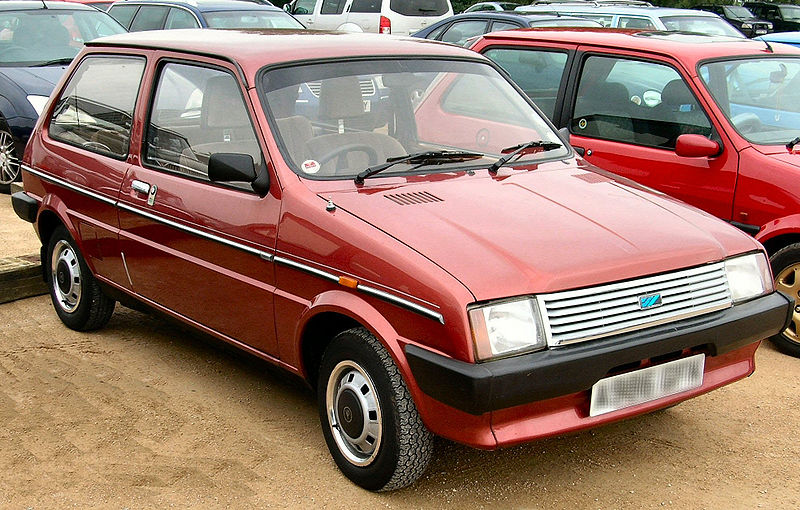

British Leyland's troubles were largely attributed to out-of-date technology and design of most of its model range. However, by the time production of the Metro began, it was decided not to include a saloon version this niche being filled by the Mini remaining in production.Īt the time of its launch, the Metro was hailed as British Leyland's saviour, as the company was facing a serious financial crisis and there were fears that it could go out of business. The issue was resolved by BL promising to advertise the car only as the "Mini Metro".Ī two-door saloon model was included in the Metro's development, which would have been similar in concept to the Vauxhall Chevette saloon as well as the Volkswagen Polo based Derby. Once the result was announced, the manufacturer of trains and buses, Metro Cammell, objected to the use of the Metro name by BL. They were offered a choice of three names, Match, Maestro or Metro. The name was chosen through a ballot of BL employees. Initially, the Metro was sold as a three-door hatchback only, with a choice of 998cc (1.0 litre) or 1275cc (1.3-litre) petrol engines. The hatchback body shell was one of the most spacious of its time and this was a significant factor in its popularity. The Metro used the Hydragas suspension system found on the Allegro but without front to rear interconnection. Some of the Mini's underpinnings were carried over into the Metro, namely the 998 cc and 1275 cc A-Series engines, much of the front-wheel drivetrain and four-speed manual gearbox, and suspension subframes. Following the Ryder Report, which prioritized the ADO88/LC8 project, Longbridge would be expanded in 1978 with a £200m robotised body assembly line (known as the "New West Works") to enable it to produce the new model which it was hoped would sell 100,000 or more units a year in Britain alone production of the smaller Mini and larger Allegro was also pruned back to enable the plant to produce as many units of the Metro as possible. Plans for a replacement for the Mini had been afoot within BL since the early 1970s, but none of the concepts conceived got beyond the initial design stages, largely due to a shortage of funds at British Leyland, and its eventual bankruptcy and government bail-out in 1975. The revised project was given the new designator LC8 ( Leyland Cars No 8), and the definitive Metro design would ultimately emerge under the leadership of BL's chief stylists David Bache and Harris Mann.

However, poor reception to the ADO88 design at customer clinics, coupled to the realisation within BL that Mini-sized cars were evolving into larger "superminis", such as the Ford Fiesta, Fiat 127, Renault 5 andVolkswagen Polo, forced a major reappraisal of the project. In late 1977, ADO88 was given an eleventh hour redesign, to make it both larger and more attractive, whilst the Mini itself would now remain in production in smaller numbers alongside it. The roots of the Metro lay in an earlier project denoted as ADO88 ( Amalgamated Drawing Office, 88-inch wheelbase), which was intended to be a direct replacement for the Mini. On 8 October 1980, BL introduced the Austin miniMetro. The Rover 100 finally ceased production in 1997, being out-lived (by three years) by the original Mini it was meant to complement.

A direct replacement in the supermini class within the MG Rover range did not arrive until 2003 with the CityRover. The new MINI introduced in 2001 was in a similar size category to the Metro but it was not a direct replacement and was produced by BMW after the Mini brand was split off from the rest of the former Rover Group. From 1990 until its withdrawal in 1997, the Metro was sold only as a Rover.Īlthough the R3 generation Rover 200 (introduced in 1995 and smaller than previous 200 models) had originally been designed as a replacement for the Metro, it was not marketed as such after its launch. During 1987, the car lost the Austin name, and was sold simply as the Metro. There were also van versions known as the Morris Metro and later, Metrovan.Īt the time of its launch, the Metro was sold under the Austin brand.
#MINI METRO CAR SERIES#
It was re-badged as the Rover 100 series in January 1995. It was intended to complement the Mini, and was developed under the codename LC8.ĭuring its 18-year lifespan, the Metro wore many names: Austin Metro, MG Metro and Rover Metro. It was launched in 1980 as the Austin miniMetro.

The Metro is a supermini British economy car that was produced by the Austin Rover Group division of British Leyland and its successors.


 0 kommentar(er)
0 kommentar(er)
